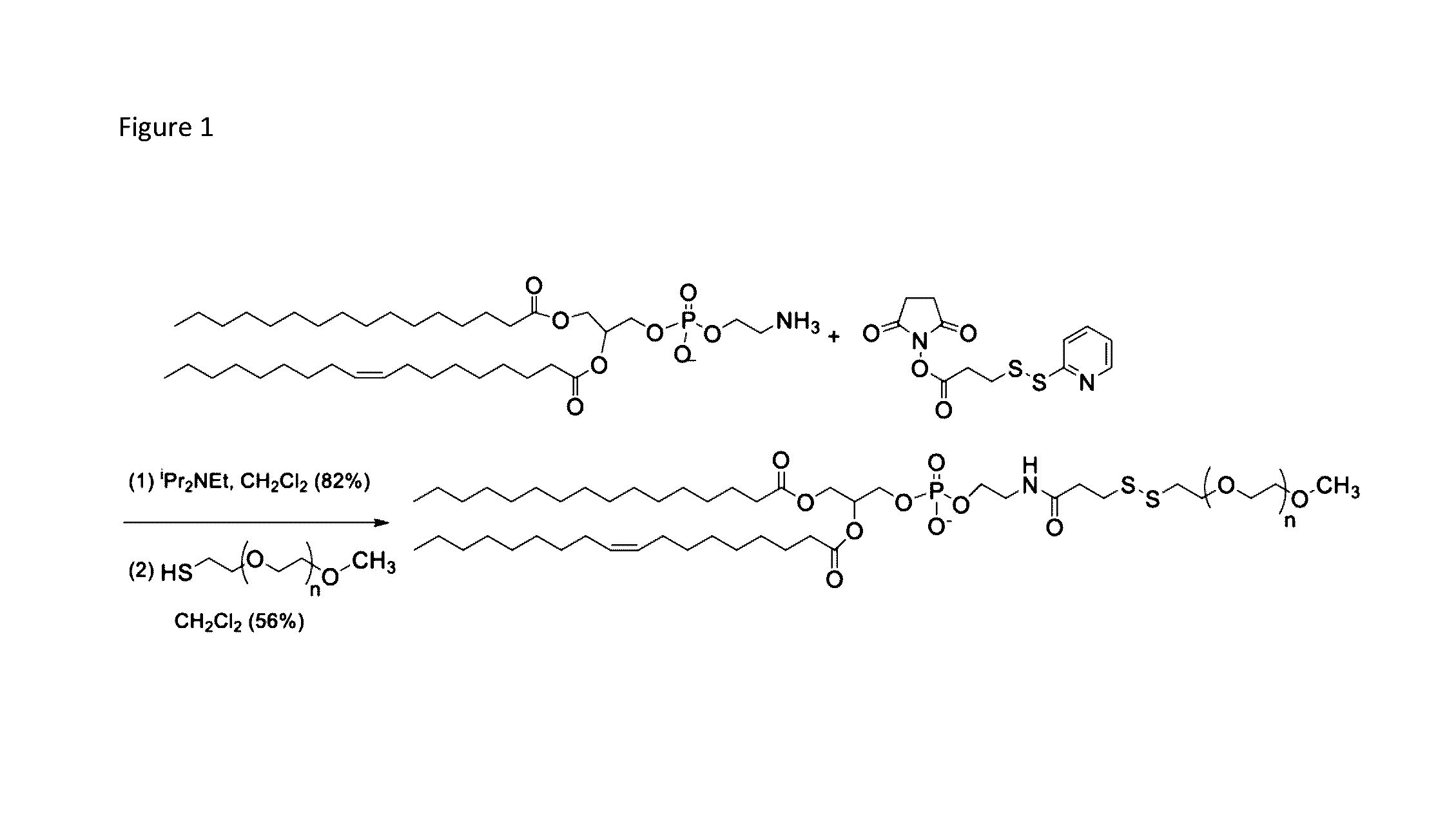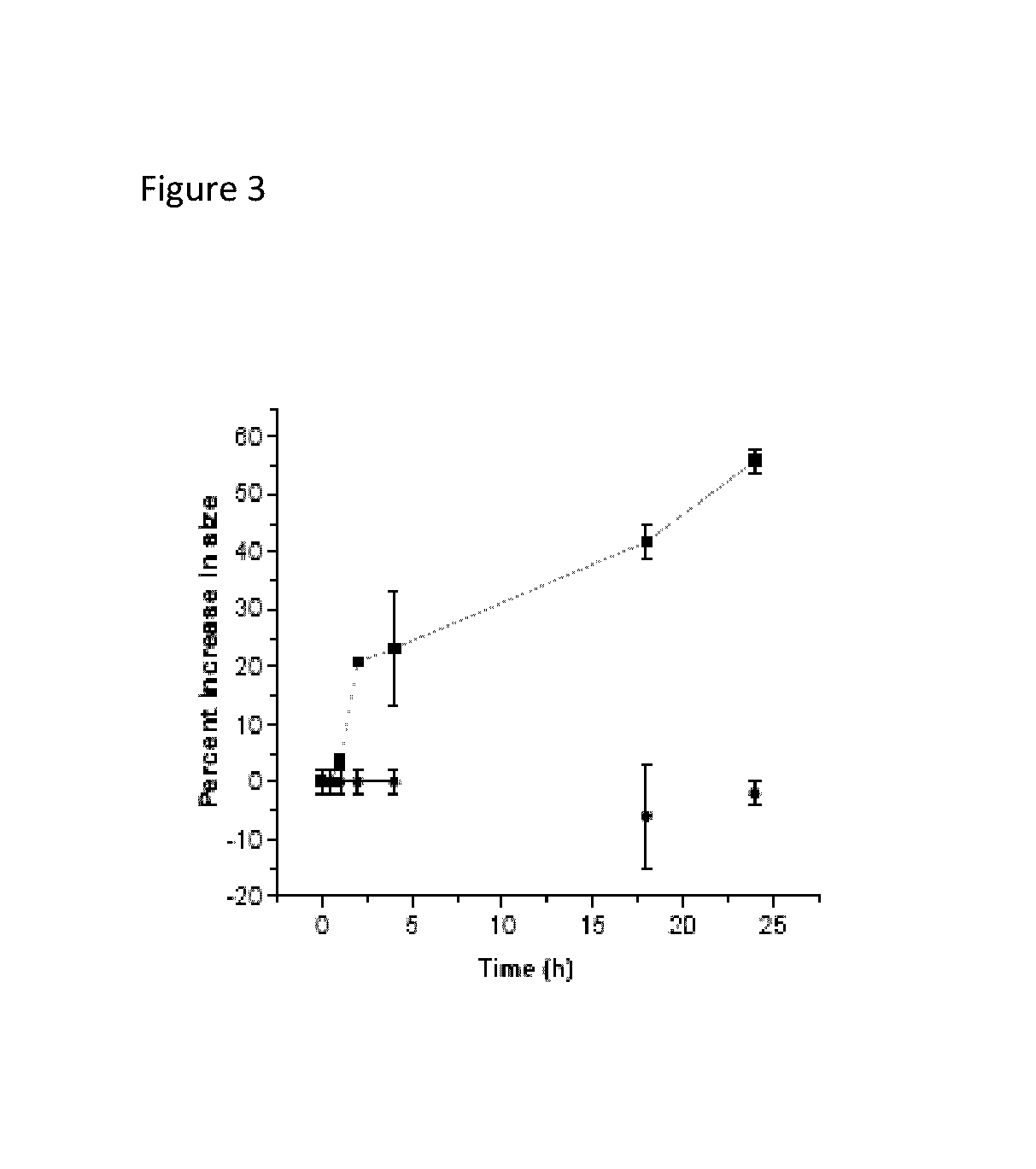Controlled release nanoparticles and methods of use
a technology of nanoparticles and nanoparticles, which is applied in the direction of powder delivery, medical preparations, pharmaceutical delivery mechanisms, etc., can solve the problems of unpolymerized liposomes that are typically not stable, severe and sometimes life-threatening side effects, etc., and achieve the effect of inhibiting the activity of enzymes, reducing disease symptoms, and reducing symptoms
- Summary
- Abstract
- Description
- Claims
- Application Information
AI Technical Summary
Benefits of technology
Problems solved by technology
Method used
Image
Examples
example 1
[0097]Significant differences in biochemical parameters between normal and tumor tissues offer an opportunity to chemically design drug carriers which respond to these changes and deliver the drugs at the desired site. For example, overexpression of the matrix metalloproteinase-9 (MMP-9) enzyme in the extracellular matrix of tumor tissues can act as a trigger to chemically modulate the drug delivery from the carriers. In this study, an MMP-9-cleavable, collagen mimetic lipopeptide was synthesized which forms nano-sized vesicles with the POPC, POPE-SS-PEG and cholesteryl-hemisuccinate lipids. The lipopeptide retains the triple-helical conformation when incorporated into these nanovesicles. The PEG groups shield the substrate lipopeptides from hydrolysis by MMP-9. However, in the presence of elevated glutathione levels, the PEG groups are reductively removed, exposing the lipopeptides to MMP-9. The resultant peptide-bond cleavage disturbs the vesicles' lipid bilayer, leading to the re...
PUM
 Login to View More
Login to View More Abstract
Description
Claims
Application Information
 Login to View More
Login to View More - R&D
- Intellectual Property
- Life Sciences
- Materials
- Tech Scout
- Unparalleled Data Quality
- Higher Quality Content
- 60% Fewer Hallucinations
Browse by: Latest US Patents, China's latest patents, Technical Efficacy Thesaurus, Application Domain, Technology Topic, Popular Technical Reports.
© 2025 PatSnap. All rights reserved.Legal|Privacy policy|Modern Slavery Act Transparency Statement|Sitemap|About US| Contact US: help@patsnap.com



